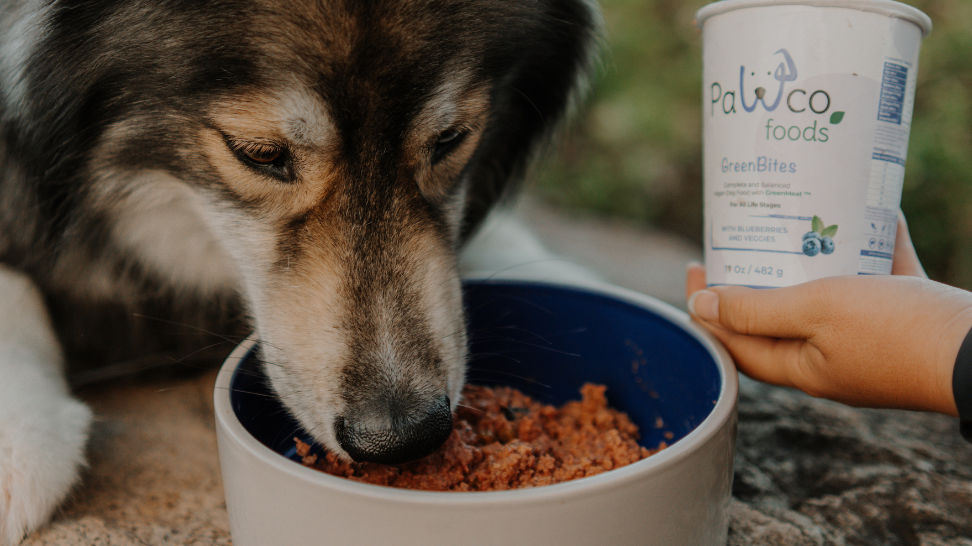Switching your dog to fresh, nutrient-dense meals is one of the best ways to improve their health, energy, and happiness. But for dogs with sensitive stomachs—or any dog accustomed to kibble—sudden changes can cause digestive upset. With a thoughtful, step-by-step approach, you can make the transition smooth, enjoyable, and nourishing for your pup.
Why Fresh Food Matters
Fresh dog food, like PawCo’s meals, toppers, and snacks, is packed with whole ingredients, functional nutrients, and balanced protein, fats, and fiber. Dogs on fresh food diets often see:
- Improved digestion and gut health
- Shinier coat and healthier skin
- Consistent energy throughout the day
- Reduced food sensitivities or inflammation
These benefits are unlocked when transitions are gradual, mindful, and structured.
Step 1: Assess Your Dog’s Current Diet
Before introducing fresh meals, understand your dog’s current routine:
- What type of food are they eating (dry kibble, wet food, or a mix)?
- Are there any current digestive issues (diarrhea, constipation, gas)?
- How many meals do they eat per day?
This information helps determine the pace of the transition and the ideal portion sizes.
Step 2: Plan a Gradual Transition

A slow introduction reduces stress on the digestive system. A standard approach is a 7–10 day gradual mix:
- Days 1–2: Replace 25% of the current meal with fresh food
- Days 3–4: Increase to 50% fresh food
- Days 5–6: Reach 75% fresh food
- Days 7–10: Full transition to fresh food
Monitor stool consistency, appetite, and energy levels at each stage. Adjust pace if any signs of discomfort appear.
Step 3: Introduce Functional Toppers for Extra Support
Toppers, like PawCo’s Magic Toppers, can ease the transition:
- Add flavor and variety without overwhelming the gut
- Include functional ingredients (prebiotics, antioxidants, fiber) to support digestion
- Allow dogs to get excited about meals, encouraging consistent intake
Step 4: Watch for Digestive Responses
Even with a slow introduction, dogs may show temporary changes:
- Mild soft stools or gas are common and typically resolve in a few days
- Persistent diarrhea, vomiting, or lethargy should be addressed with your veterinarian
- Keep water available and maintain regular feeding times to support gut rhythm
Step 5: Consider a Flexitarian Approach
Not every dog needs a fully plant-based diet. Flexitarian feeding—mixing plant-based meals with traditional protein sources—is a safe, healthy strategy. Benefits include:
- Easier digestion for sensitive pups
- Added variety in nutrients and flavors
- Lower environmental footprint without sacrificing nutrition
PawCo’s plant-based meals are fully balanced, so you can continue adding shredded chicken, eggs, or other proteins without losing essential nutrients.
Step 6: Make Mealtime Enjoyable
Transitioning diets is also about positive associations:
- Serve meals in a calm, quiet environment
- Use interactive feeders or puzzle bowls to engage your dog
- Celebrate small wins, like finishing meals or stool improvements
Step 7: Track Progress
Keep a simple log to monitor how your dog is adjusting:
- Appetite and eagerness to eat
- Stool consistency
- Energy levels and coat condition
This information helps you fine-tune portion sizes, topper additions, and meal frequency.
Conclusion
Transitioning your dog to fresh food doesn’t have to be daunting. By introducing meals gradually, supporting digestion with toppers, and keeping mealtime fun, you can set your pup up for a lifetime of better health, energy, and joy.
With PawCo’s carefully formulated meals, toppers, and snacks, you’re giving your dog complete, balanced nutrition—while also allowing flexibility for occasional additions. Every step toward fresh food is a step toward a happier, healthier pup.
